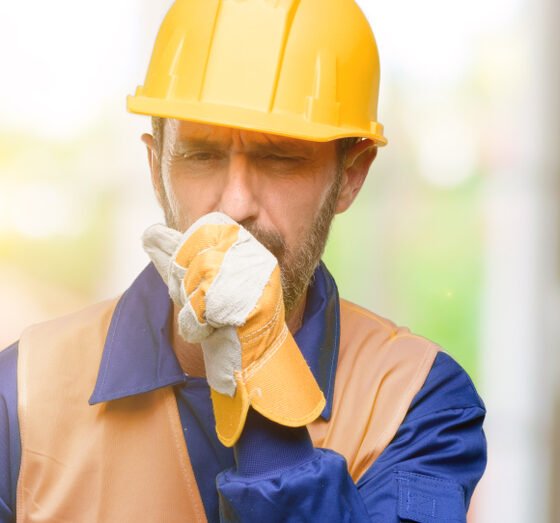

Features
Green Living, Education and Awareness Are Keys to Preventing Mesothelioma
More people are becoming concerned about the state of the environment than ever before. However, our health is also a top concern. In many instances, environmental issues and the state of our health overlap.
One of the biggest ways that our health and the environment are intertwined is with discussions about asbestos. Seth Leitman, the founder of The Green Living Guy blog has an article on asbestos and the impact that is has on both our health and the environment.
There are a lot of issues that need to be taken into consideration when you are trying to live a healthy and green lifestyle. One of the most important issues is to limit our use of asbestos. In addition to helping the environment, reducing the use of asbestos is going to minimize the risks of mesothelioma.
Live Greener Lifestyle to Minimize the Risk of Mesothelioma
Mesothelioma is a rare, deadly cancer caused by asbestos exposure. These days, asbestos is widely controlled, but some people may still be at risk for asbestos exposure due to a lack of awareness.
Of course, the risks to our health isn’t the only reason asbestos is bad. The Indiana Department of Environmental Management has a great article on the importance of limiting asbestos use to protect the environment.
Air, water and soil can become contaminated with asbestos released from construction, demolition, mining and manufacturing activities. Suspended in the air for long periods of time, asbestos can travel far distances by wind or water before settling. Unfortunately, it does not biodegrade or break down, causing potential risks to humans.
Everyone is exposed to asbestos in soil, water, and air, at some point. This exposure is usually minimal and generally does not create health risks. If asbestos-containing materials deteriorate without containment during demolition or renovation, vehicle maintenance (brakes and clutches), mining, and manufacturing activities, fibers can become airborne and be inhaled. The fibers can stay in the lungs for a prolonged period of time.
Educating people so that they are aware of the risks and the ways to avoid asbestos exposure is critical to eradicating this disease.
Understanding How Mesothelioma Works
As concerning as the environmental issues associated with asbestos are, the threat of mesothelioma hits closer to home for most people. It is important to be aware of the health risks, as well as the environmental factors.
Asbestos is a fibrous mineral popular in building materials until the 1980s. It was heat resistant and suitable for insulation. When building materials using asbestos are drilled into, sanded, or demolished, the small, fibrous particles can be inhaled, ingested, or lodged into the skin, causing inflammation and scarring, which can lead to cancer.
Mesothelioma can affect the lining of the lungs, the abdomen, or the heart. Exposure to asbestos does not cause an immediate reaction. Because of this latency, depending on the dose and the duration, a person may not develop the disease for several decades.
Because it takes so long to become evident, it can be challenging to diagnose and treat. Some of the more common symptoms that mesothelioma sufferers experience are as follows:
- Chest pain
- Shortness of breath
- Coughing
- Fatigue
Once a person is diagnosed with mesothelioma, the treatment options can be pretty limited. Some of the common treatments include the following:
- Extrapleural pneumonectomy: is considered the best available treatment for removing the mesothelioma from the affected lung, chest, and heart area, along with the lymph nodes and the diaphragm.
- Pleurectomy with decortication (P/D): is another surgery available to treat mesothelioma sufferers. That is a less invasive treatment of two surgical techniques called pleurectomy, where the lung lining where the tumor grows is removed, and decortication, where the visible tumors on or around the diseased lung are also removed.
- Pleurodesis: is palliative care surgical procedure to ease pain and pressure that is a result of pleural effusion, which is, simply put, fluid build-up in the chest. It relieves chest pain and makes it easier for the patient to breathe.
- Chemotherapy: Chemotherapy and immunotherapy drugs used in combination can increase the chance of survival by around three months. Combined with surgical procedures, the survival rate can be extended much longer.
- Radiation: Radiation is another treatment that is used for palliative care and can reduce the size of pain that comes from pleural mesothelioma tumors.
A Shift Towards Green Living, Education and Awareness are the Keys to Prevention
Being aware of the dangers of asbestos and receiving proper education and training about the threats associated with it are critical to prevention. With education, people understand how to protect themselves from this hazardous mineral.
People will also be less likely to be threatened by asbestos and suffer from mesothelioma if they live greener lifestyles.
Here are some of the key areas in asbestos education that needs to be stressed:
Training in the Workplace
If you are potentially exposed to asbestos on the job, it is direly important that you receive training at work. Employers should provide training at work on proper safety, handling, and removal of asbestos. Another important factor that may minimize personal risks is wearing personal protective equipment (PPE), such as protective clothing, and using respirators.
Public Health Campaigns
In the past, public health campaigns have helped raise awareness concerning the risk of asbestos and developing mesothelioma. Such campaigns have included television, radio, billboards, and social media marketing. By pointing out the risks and symptoms of mesothelioma, the public is more aware of the warning signs and may seek medical attention more promptly.
Community Outreach Efforts
Some community outreach efforts include programs that provide education and support to individuals who have been subjected to asbestos exposure. These initiatives often include health screenings, educational workshops and seminars, and support groups for individuals and families who have been afflicted with the disease. Efforts to reach at-risk communities enable them to take proactive steps so they may protect their health.
Regulatory Measures Are Helpful
Curbing the use of asbestos and ensuring that when it is handled, it is done safely and properly can ensure that there is overall less exposure to asbestos. The Environmental Protection Agency (EPA) has specified rules and regulations for the handling and disposal of asbestos-containing materials. By setting regulations and then enforcing them, the risk of asbestos exposure is minimized.
Mesothelioma Education and Awareness is Critical
Mesothelioma is a deadly cancerous condition that can be prevented or minimized by education and awareness. Making sure that citizens understand the threat and how to protect themselves from it is critical to the well-being of those who might be exposed.
By providing workplace training programs, public health initiatives, and community outreach campaigns, and enforcing regulatory measures, exposure to asbestos can be prevented. By preventing exposure, the risk of mesothelioma is also diminished.
Practice Eco-Friendly Living to Reduce the Threat of Mesothelioma
Mesothelioma is a serious threat that is caused by asbestos exposure. Asbestos is also a danger to the environment. The good news is that living greener lifestyles can help people avoid these growing concerns.





























